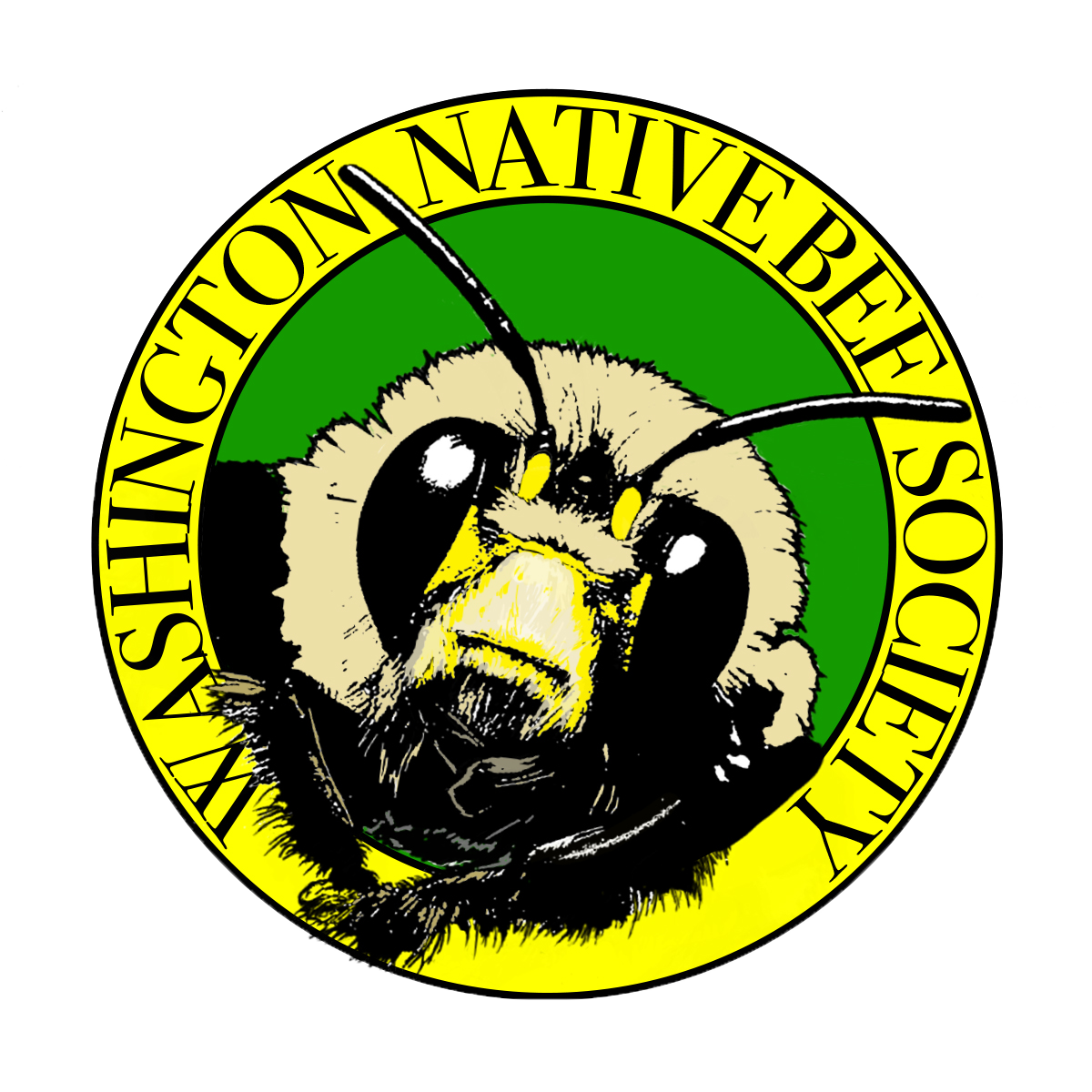Explore bees with iNaturalist!
- Elise Novitski
- Mar 20, 2024
- 4 min read
Updated: Jul 29, 2025
Many of us in the WaNBS love to take photos of bees and share them in the Washington Native Bee Society iNaturalist project. Whether you a a bee-ginner with a cell phone or a taxonomist with a fancy camera, there is lots to learn on this platform. Here are some tips for getting started!
What is iNaturalist?
iNaturalist is an online community and software platform where people share and identify photos of organisms.
100,266,189 observations by 5,229,364 observers
Organisms can be identified by anyone else on iNaturalist, ranging from beginners to experts. Experts help beginners learn.
380,168 species by 251,338 identifiers
iNat also has a Computer Vision (Artificial Intelligence) algorithm that can try to automatically recognize organisms in photos.
iNaturalist is accessible on its website, its smartphone app, or with a more limited set of functions with the kid-friendly Seek app.
What can you do on iNaturalist?
Learn
Post your own observations and learn from identifications that others contribute to them.
Practice identifying others’ observations.
Connect: iNat is a meeting place for amateurs, conservationists, scientists, and casually curious people.
Gather data
Help train the Computer Vision algorithm so it can get better at recognizing more species.
Contribute to global biodiversity databases. “Research Grade” observations-–with at least two IDs, and where 2/3rds of IDs agree--are automatically added to GBIF.
Address scientific questions:
How far does each species’ range extend?
Are the boundaries moving?
How do species interact? E.g., what flower species does a bee species gather pollen from?
Best practices for making an observation on iNaturalist
Each observation only is for one individual organism.
If one of your photos shows two individuals, make two separate observations and write in the comments which observation is for is for which organism.
You can (and should!) add multiple photos of the same organism into one observation.
If an observation is for something that is not wild (e.g., a honey bee from your own hive or a plant you planted in your garden), make sure to check the “Captive/Cultivated” checkbox.
Add an accurate location. If you are worried about privacy, you can pick the “obscured” option, which only shows the location to precision of a box about the size of Seattle.
Tips for taking identifiable photos for an observation
Could you identify the bee in the zoomed-out photo?

(Photo: Lisa Robinson)
We couldn't, either! Please include at least some photos that are cropped as closely as possible. This cropped version of the same photo shows the characteristic dark wings and corbicula (pollen basket) of a bumble bee:

(Photo: Lisa Robinson)
Include multiple views of the bee when possible (But don’t worry if you can’t! Even a single blurry pic can sometimes be IDed.)
Head - front and side both helpful
Lateral - side for scopa (pollen carrying hairs, which mark it as female)
Dorsal - back patterns of hairs or color of integument (exoskeleton)
Wing - shape of cells can help ID your bee to genus
Example - separate Haboropoda from Anthophora
Claws, mandibles

Best practices for identifying your own observations
Enter some ID rather than leaving the ID field blank, even if it's very general, e.g., “Insects”, “Bees and Apoid Wasps”, or “Bees.” This helps experts find your observation.
If you can, identify it more specifically. Use the most specific designation you are fairly certain is correct, but don't go any more detailed than that.
Be skeptical about Computer Vision’s suggested IDs.
“We’re pretty sure this is in the genus… ” is NOT 100%; it’s a place to start your investigation.
Click the View link to compare to other photos.
Look at the taxa a few levels up (e.g., family rather than genus, or genus rather than species) and consider how fine-grained to go.
Consider using guidebooks or online keys.
Consider geographical range and season.
Explain your reasoning to help others learn!
Use widely-understandable language and explain any jargon.
Lisa will use jargon/terms (followed by common form), like this:
Corbicula (pollen basket)
T2 (second upper abdominal segment)
S3-4 (segments under abdomen)
Agree and identify carefully!
If someone IDs your observation, only click “agree” if you are independently confident it is correct. An “Agree” is not a “Like” as in other social media. If you wish to say "thank you" to the identifier, feel free to leave a comment and tag them instead!
“Research grade,” a designation that allows observations to be exported to global biodiversity databases, only requires 2 agreeing IDs if there aren’t disagreeing IDs. That means that If you click "agree" but the ID is incorrect, a wrong answer becomes part of the “good” data.
Disagree courteously. If you think someone else's identification is wrong, find a kind way to point out the correction. Get curious, and remember that you could be the one who is wrong.
This only scratches the surface of what is possible on iNaturalist. From connecting to groups who arrange in-person observing meetups, to adding to projects that collect observations that show specific behaviors (such as Bees Concentrating Nectar, Ground Nesting Bees , and Sleepy Bee Slumber parties), to using the Explore function to see what's being observed in your neighborhood, there is always more to learn and do. Enjoy!
Where can I learn more?
Check out Getting Started with iNaturalist for more basic info on posting to iNat through the app or by web.
The iNaturalist Forum is a great place to search for answers to more advanced questions or to ask your own questions.
Browse the observations in the Washington Native Bee Society iNaturalist project. If you make an observation of a bee (other than a honey bee) in Washington State, it will automatically appear here!
Authors: Elise Novitski and Lisa Robinson
